I made a cardinal festival fashion error at Glastonbury in 2008. It wasn’t the obvious one—I didn’t wear white trainers or suede desert boots like some optimistic festival first-timer who doesn’t understand the concept of mud. No, my mistake was more subtle and, frankly, more embarrassing: I tried too hard.
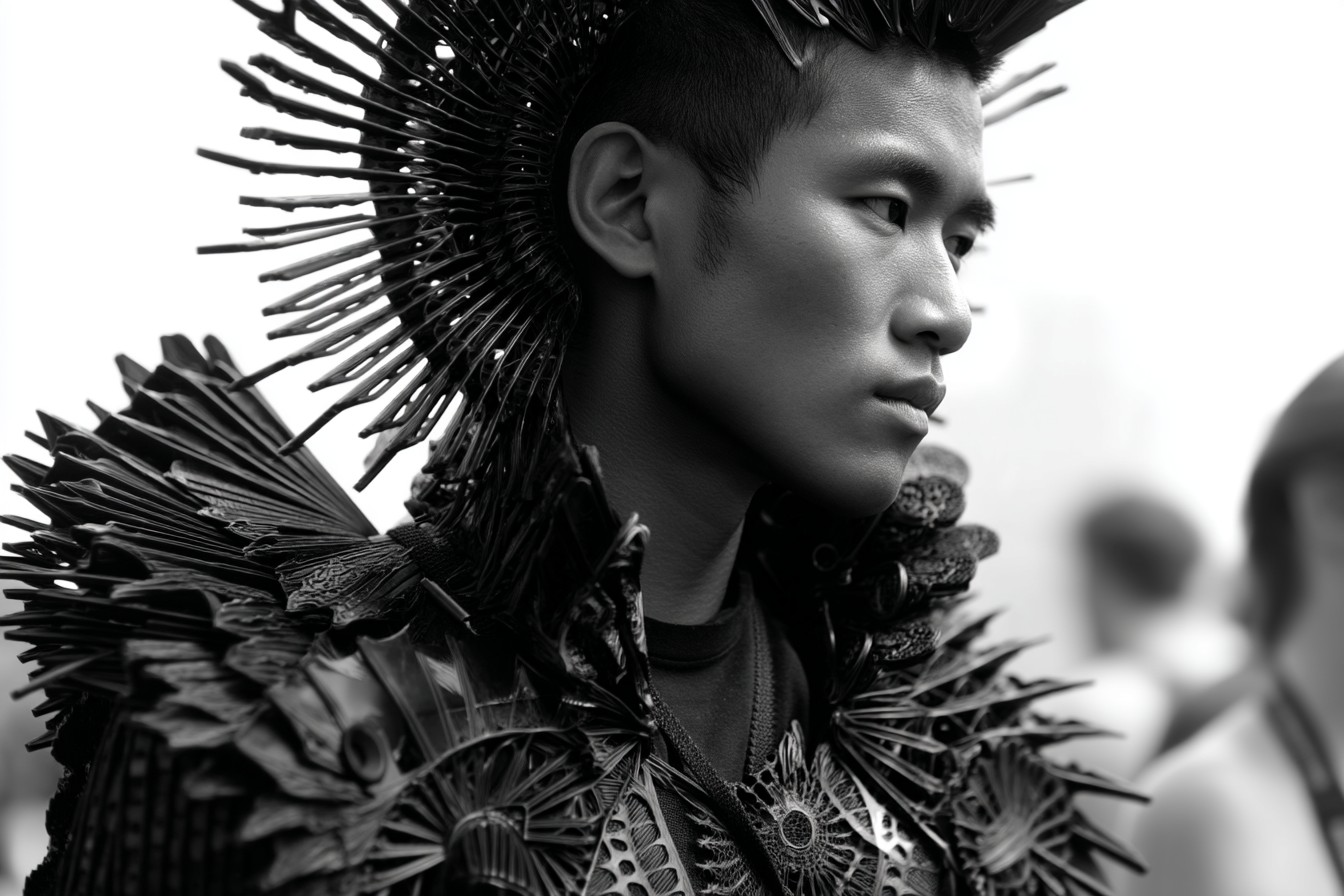
I turned up in what I thought was the perfect calculated-casual festival look: vintage military jacket with precisely the right amount of distressing, limited edition band t-shirt (obviously not the band I was actually there to see—that would be gauche), selvage jeans with artful mud stains that I’d actually pre-distressed myself, and desert boots that I’d carefully weathered by dragging them behind my bike through the park. I topped it all off with a flat cap tilted at what I believed was a rakish angle but probably just made me look like an extra from Peaky Blinders who’d wandered onto the wrong set.
I looked, in short, like a colossal try-hard. The kind of bloke who spends more time planning his festival outfits than actually listening to the bands. The worst part? I wasn’t even twenty-five yet—the age when this kind of fashion over-calculation might be forgivable. I was approaching thirty, old enough to know better.
This fashion crime was brought into sharp relief when I bumped into my old university mate Dave at the Stone Roses set. Dave, who had never shown the slightest interest in clothes during our three years of studying together, was wearing faded jeans, battered Converse, and a plain navy t-shirt under a standard-issue navy waterproof. He looked completely unremarkable and yet, somehow, completely right. While I was sweating in my military jacket (both literally and metaphorically), he was comfortable, appropriate, and not giving his outfit a second thought.
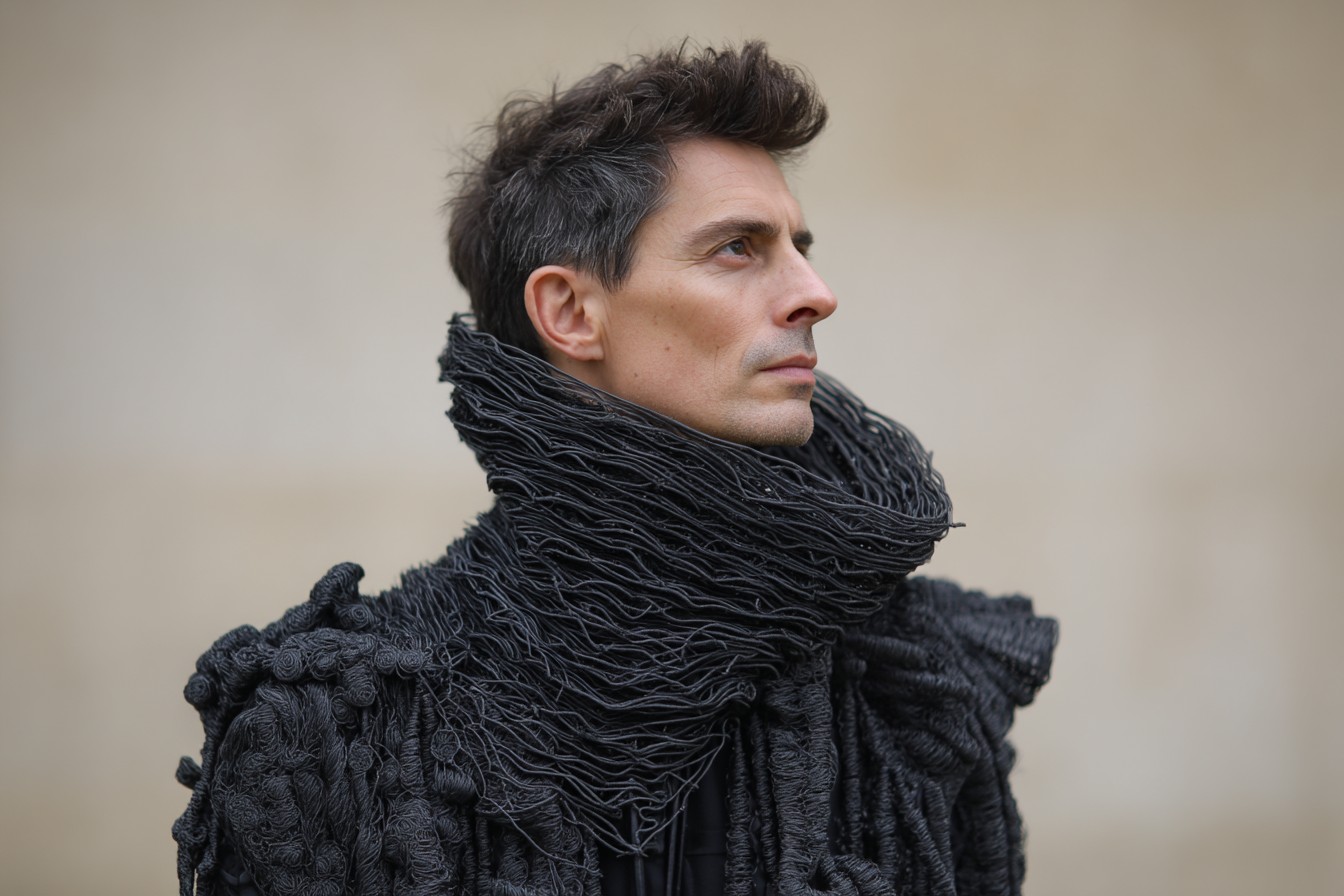
“Mate,” he said when he saw me, not unkindly, “you look like you’re dressed for the festival in someone’s Instagram post, not an actual festival.”
It was a brutal but necessary reality check. As we stood there in the drizzle watching Ian Brown mumble his way through “I Wanna Be Adored,” I had a proper sartorial epiphany: British festival dressing for men isn’t about looking good. It’s about looking like you haven’t spent more than four minutes thinking about how you look.
This is, of course, a very British paradox. The appearance of effortlessness often requires considerable effort. But the cardinal rule remains: that effort must never, ever be visible. Especially not at a music festival, where the unspoken dress code dictates that your passion for the music should visibly outweigh your interest in your outfit.
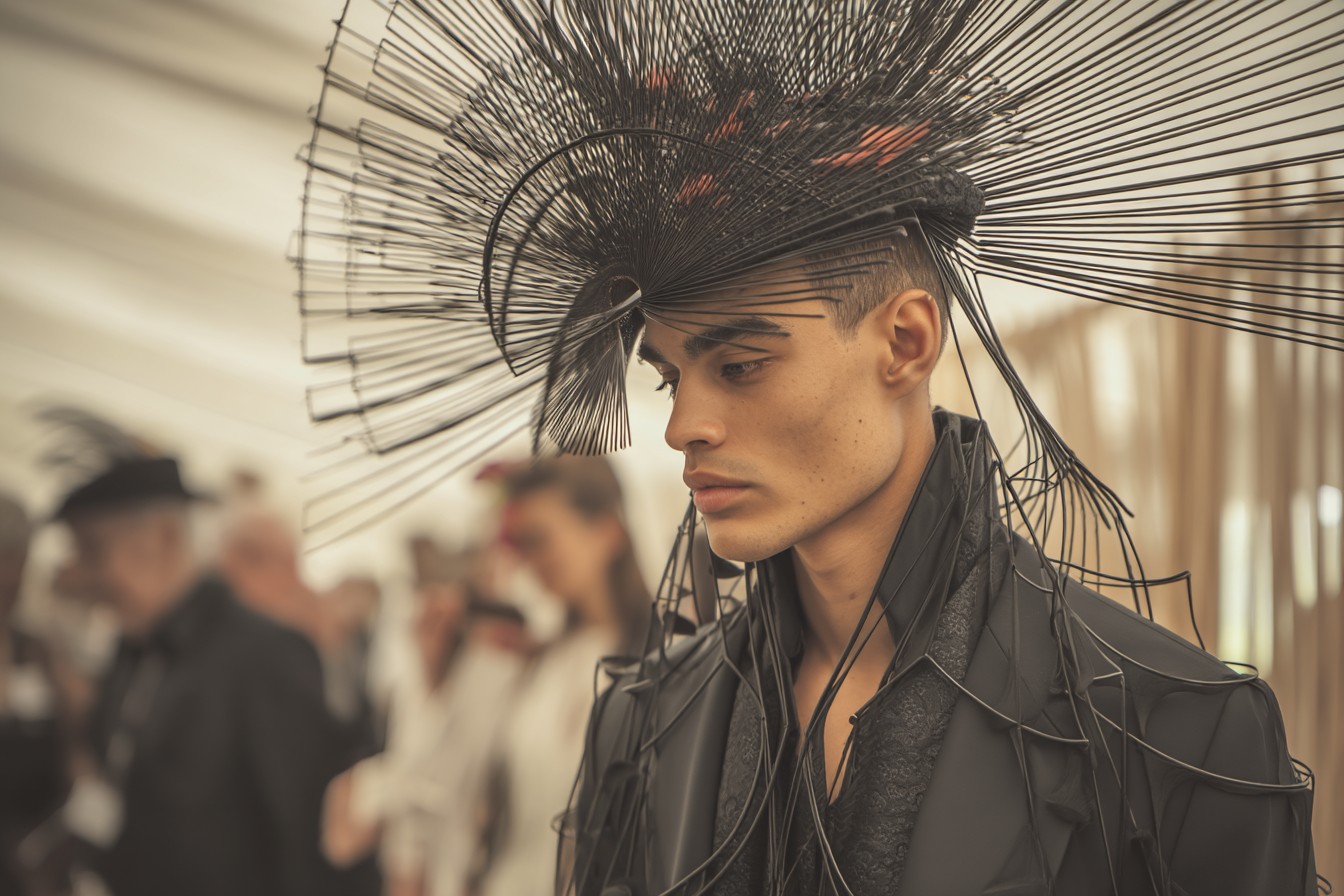
Since that humbling Glastonbury experience, I’ve developed a more authentic approach to festival dressing that I call the “functional with personality” method. It acknowledges the quintessentially British factors that make our festival experience unique (namely: mud, rain, mud, unexpected heat, more mud, and the peculiar British male fear of appearing to care too much), while still allowing for personal style.
The foundation of any British festival outfit has to be practicality. Our festivals are not Coachella. The weather will not be consistently kind. You will encounter mud with the consistency of quicksand. You may experience all four seasons in a single afternoon. Your outfit needs to acknowledge these realities while pretending it hasn’t given them much thought.
Footwear is where most festival disasters begin and end. White trainers are obviously suicidal. Box-fresh anything is asking for immediate destruction. The sweet spot is what I call “considered weatherproofing”—footwear that can handle the elements but doesn’t scream “I’M WEARING TECHNICAL GEAR!” like you’re summiting Everest rather than watching Coldplay in a field.
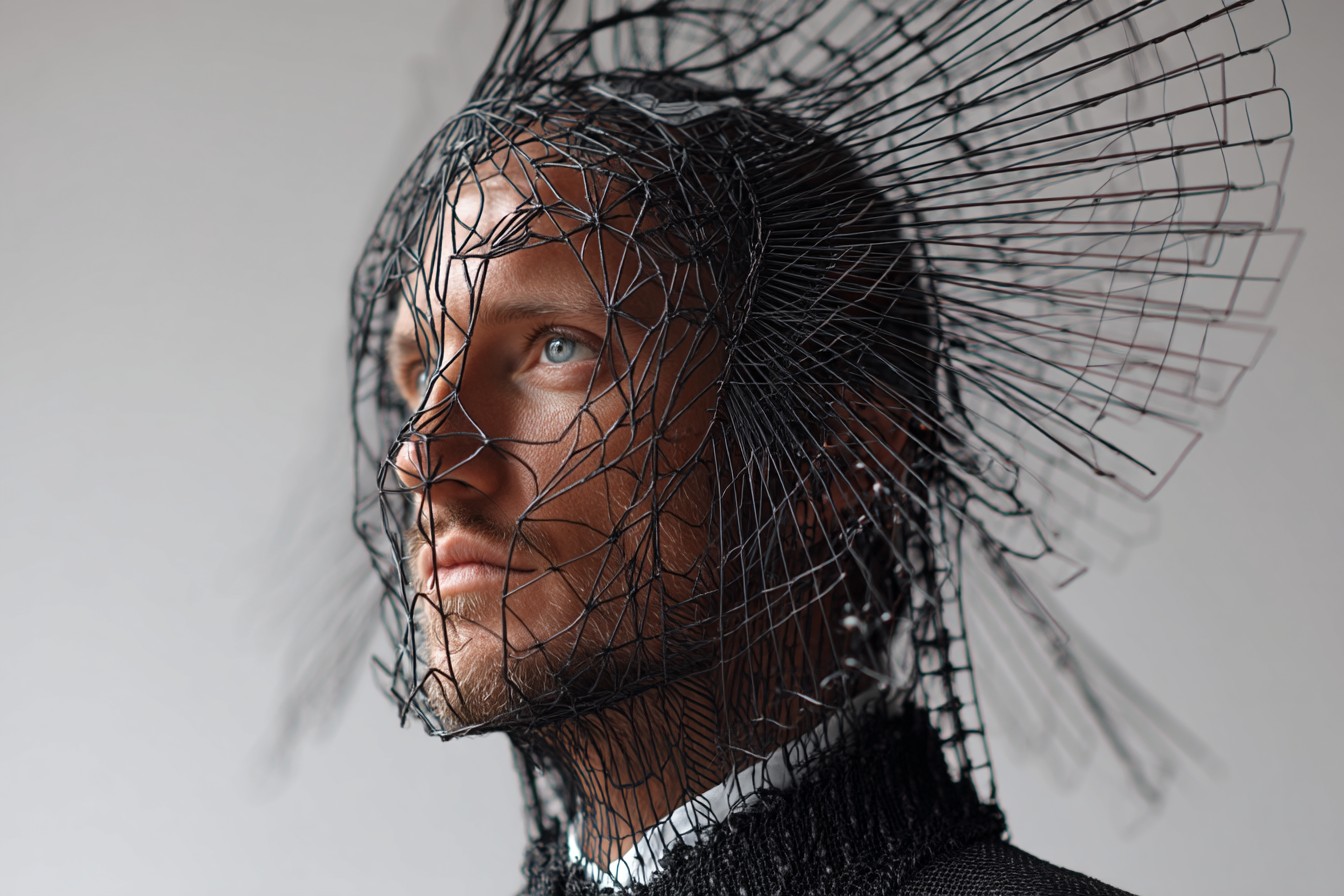
Classic options include well-worn boots from brands with authentic heritage (think Blundstones, Dr. Martens, or Red Wings), trainers that improve with abuse (Converse, Vans, or New Balance 574s), or if the forecast is particularly apocalyptic, Hunter wellies—but only if they look like they’ve seen at least one previous festival. Nothing screams “festival virgin” like pristine green wellies.
Jamie, a music journalist friend who’s been to more festivals than hot dinners, swears by his ancient Blundstones. “They’ve seen fifteen Glastonburys and counting,” he told me recently. “They’ve transcended being boots and are now basically portable terrain vehicles for my feet.” That’s exactly the level of practical nonchalance you’re aiming for—gear that works hard while looking like it’s not trying at all.
Next: outerwear. Again, the British climate forces certain practical considerations, but there’s a fine line between “prepared for rain” and “dressed for a North Sea oil rig emergency.” The classic British festival jacket remains the humble Barbour, particularly if it’s old enough to have developed a patina of previous outdoor adventures. Waxed cotton provides excellent rain protection without looking like you’re overly concerned about staying dry.
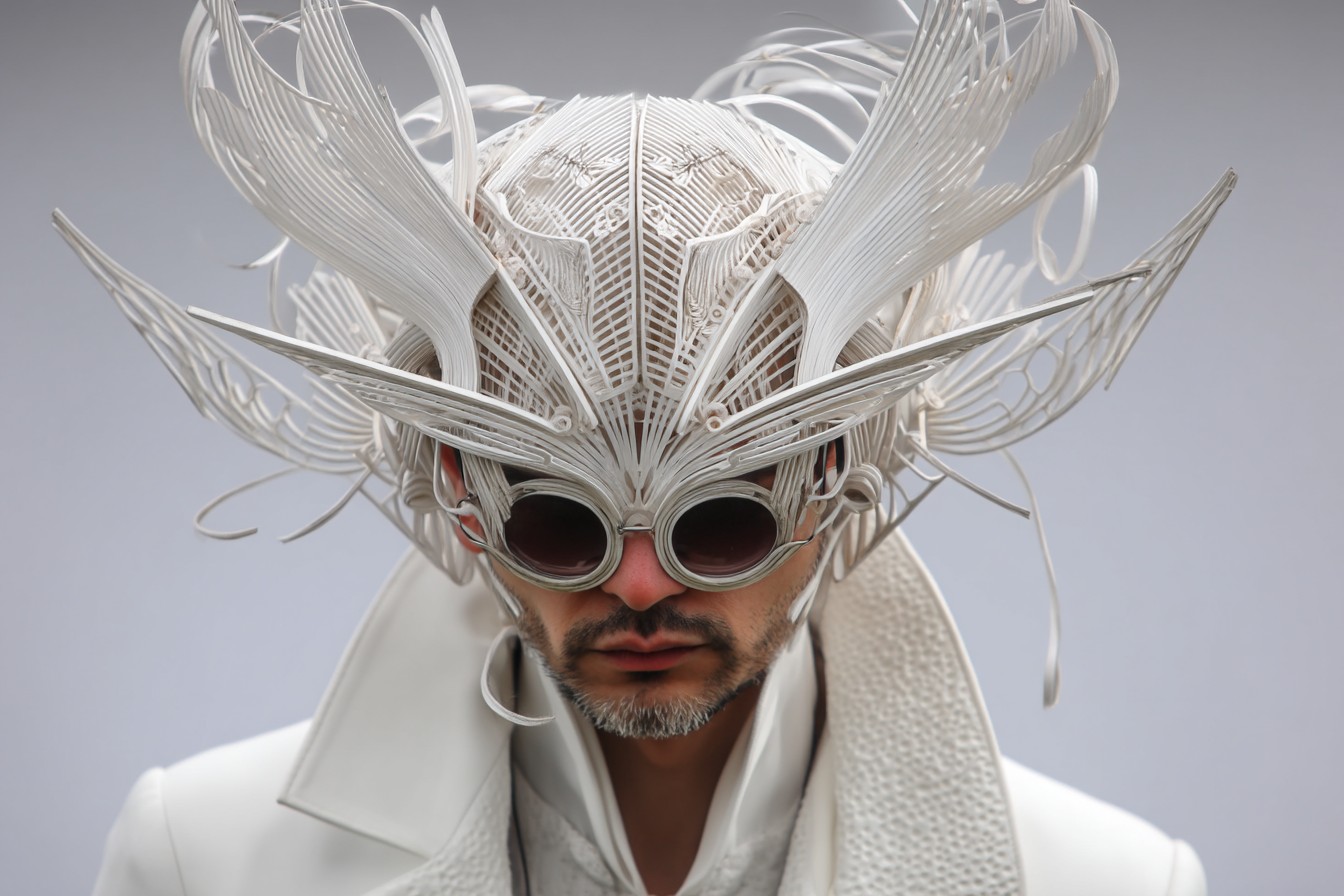
For a more contemporary option, the basic mountain parka from brands like Patagonia, The North Face, or even Uniqlo offers practicality without screaming “I’ve overthought this.” The key is choosing subdued colors (navy, olive, black) rather than the high-visibility hues that suggest you’re worried about being rescued by helicopter.
The technical-but-not-too-technical jacket works because it sends the right message: “I’m sensible enough to check the weather forecast, but I’m not precious about getting a bit wet.” That balance of preparation without preciousness is the sweet spot of British festival style.
The mid-layer is where you can introduce some personality without crossing into try-hard territory. A well-worn flannel shirt, a faded band t-shirt (ideally from a previous gig or tour, not freshly purchased for the occasion), or a plain but quality sweatshirt all work perfectly. The common theme? They should look lived-in, not box-fresh.
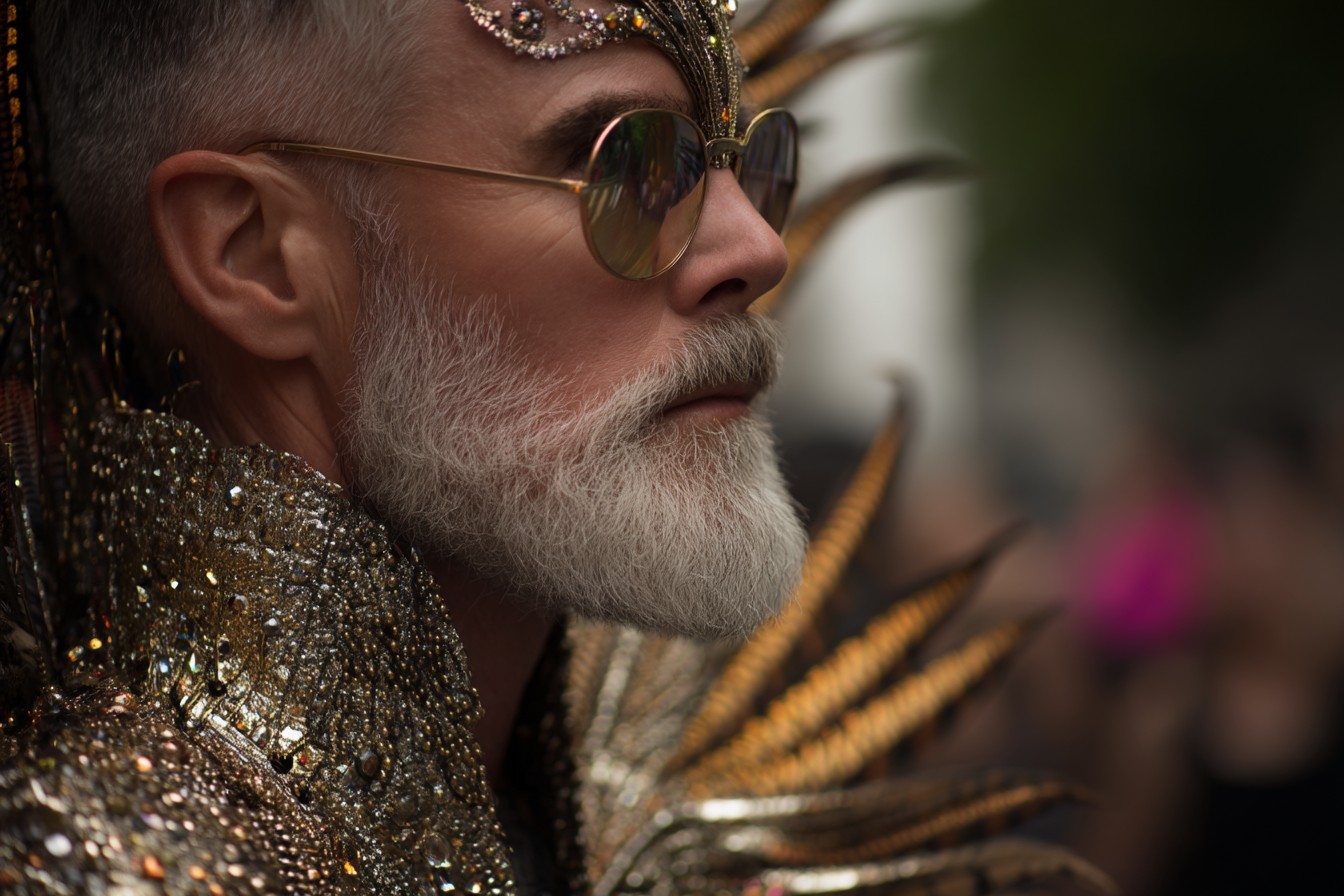
My favorite festival mid-layer is a navy cotton overshirt I’ve had for nearly a decade. It’s sturdy enough for chilly evenings, casual enough to tie around my waist when the sun comes out, and has enough pockets to be genuinely useful. Most importantly, it looks completely unremarkable—which, paradoxically, is exactly what you want.
For legwear, the humble jean still reigns supreme, but with caveats. Ultra-skinny styles have fallen from favor (thankfully—try using a festival toilet while wearing spray-on denim and you’ll understand why), replaced by more relaxed straight or slightly tapered cuts. The key is choosing denim sturdy enough to handle multiple days of wear while being comfortable enough for long periods of standing, sitting on grass, and navigating crowded spaces.
Color-wise, stick to classic indigo or black, which show less dirt than lighter washes. And for god’s sake, make sure they’ve been worn in. Nothing says “I bought these specially” like rigid denim with pristine creases.
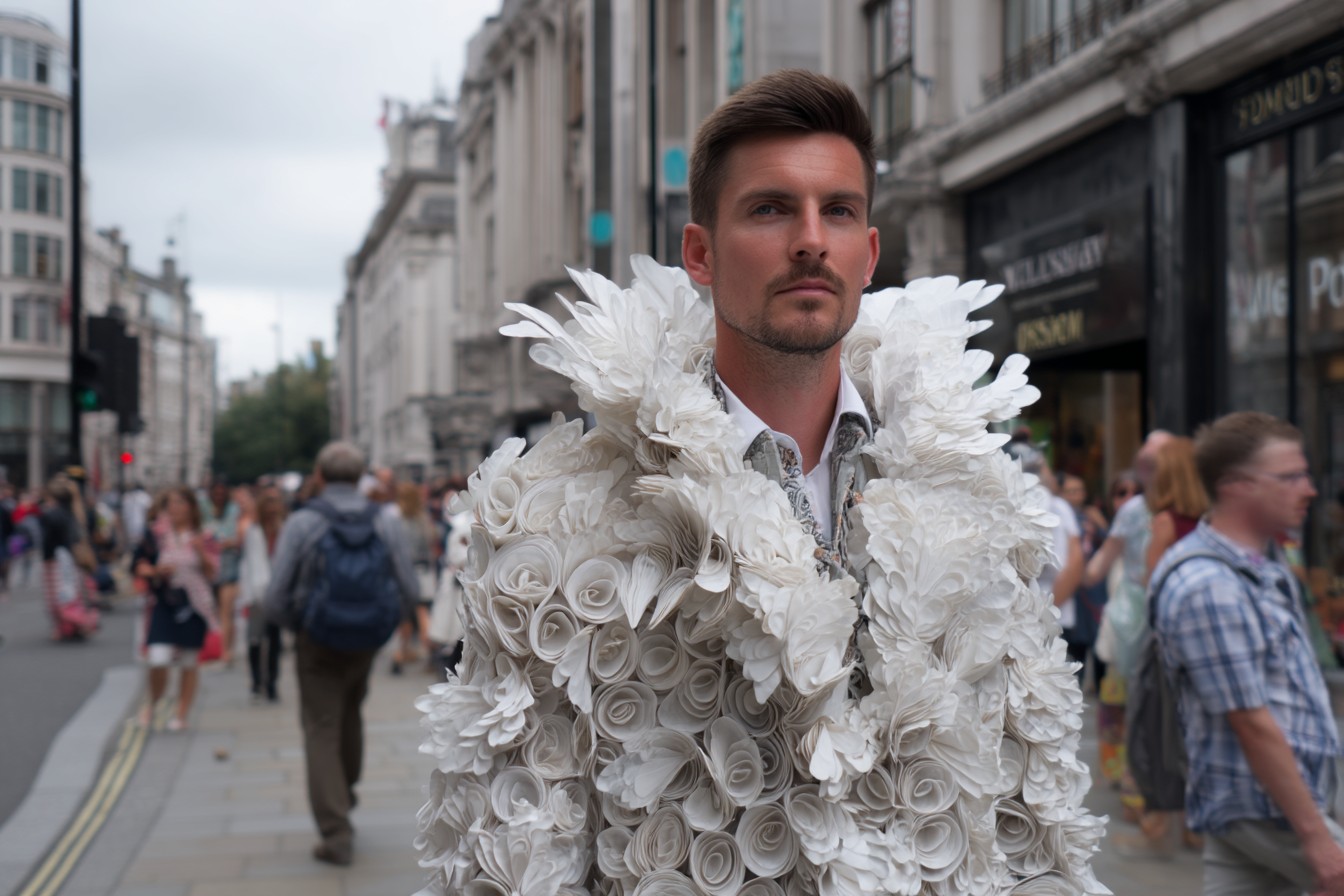
If the forecast suggests biblical heat (increasingly common with climate change making British summers more extreme), shorts become acceptable. But not just any shorts. Board shorts scream “I’m treating this like a beach holiday,” cargo shorts suggest you’re confusing the festival with an archaeological dig, and anything too tailored looks like you’ve wandered in from Henley Regatta.
The safe bet is simple cotton or denim shorts that hit just above the knee, ideally in navy, khaki, or black. They should look casual without veering into slovenly territory. As my stylish friend Marcus puts it: “You want shorts that look like you grabbed them from your drawer, not shorts that look like you had them professionally pressed for the occasion.”
Accessories present the greatest opportunity for catastrophic try-hard errors. Flower crowns on men were never acceptable. Bandanas should be approached with extreme caution unless you’re actually in a motorcycle gang. Novelty sunglasses, festival wristbands from 2014, and excessive jewelry all scream “I’m dressing for the Instagram post, not the experience.”
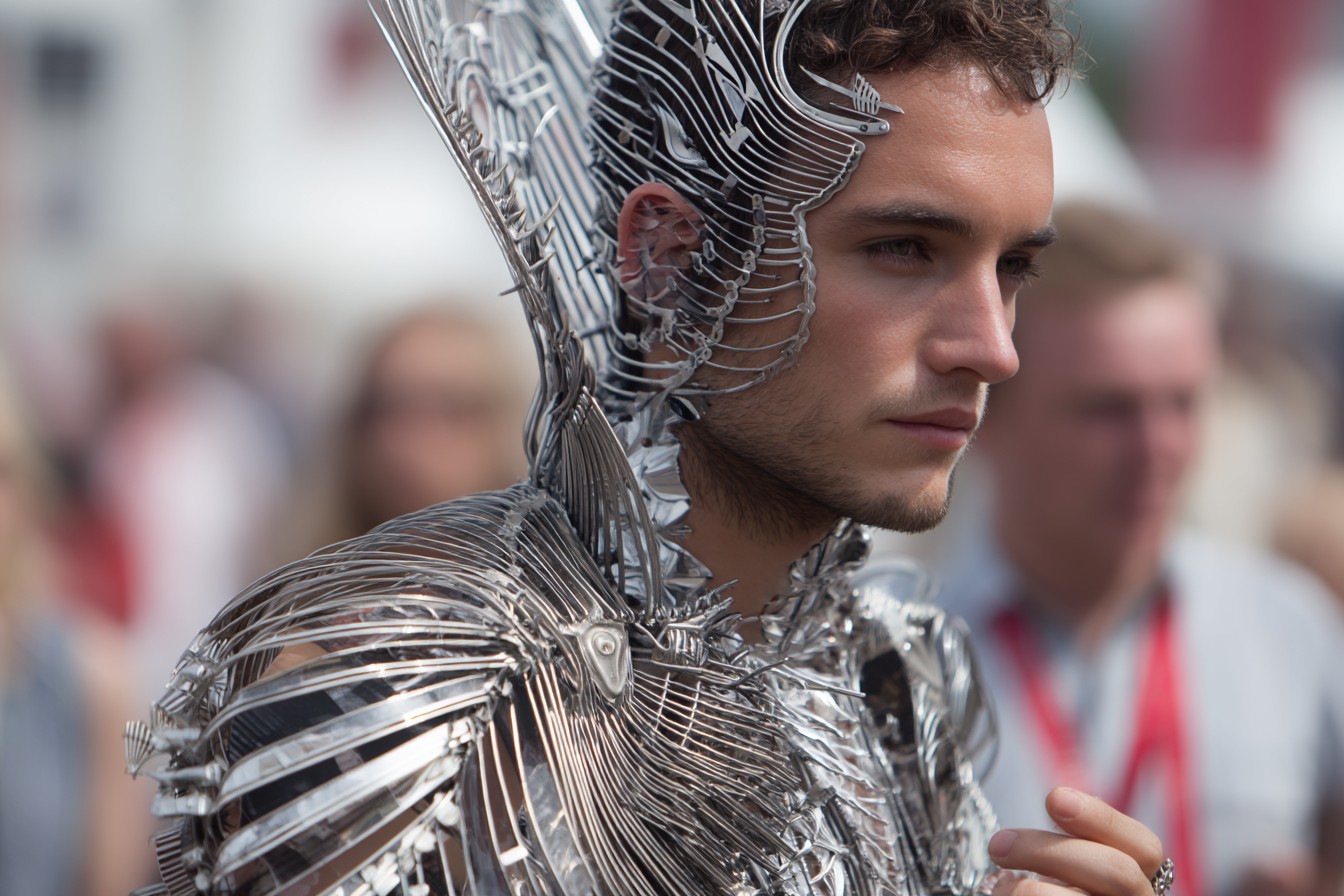
The Britishly appropriate approach to festival accessories is ruthless minimalism with tiny touches of personality. A decent pair of sunglasses (classic Ray-Ban Wayfarers remain undefeated for festival appropriateness), a simple watch that can handle abuse, and perhaps one subtle piece of personal significance—a well-worn leather bracelet, a ring with meaning, or a cap from a brand you actually have some connection to.
My festival kit now includes exactly one accessory with personality: a vintage Swiss Army watch on a NATO strap that’s been with me through multiple muddy fields and has the battle scars to prove it. It tells the time (crucial for not missing bands), can handle being submerged in puddles, and looks like it was chosen for function rather than fashion. Perfect.
A note on bags: the crossbody or small backpack is your friend. Festival veterans know that keeping your hands free is essential, and constantly patting your pockets to check for your phone/wallet/keys is the fastest way to ruin your enjoyment of the music. A simple canvas tote, battered leather satchel, or basic backpack in a dark color hits the sweet spot of practical without precious.

What about the much-maligned bum bag (or fanny pack, if you’re reading this in America)? They’ve undergone a remarkable rehabilitation in recent years, moving from tourist embarrassment to acceptable festival gear. Just keep it simple and understated—the technical-looking ones from brands like Patagonia or The North Face work because they prioritize function over fashion.
The final and perhaps most important element of British festival style for men is how you wear it all. The outfit should look like it was assembled with minimal thought, even if considerable strategic planning went into it. Nothing should appear too pristine or precious. If you’re worried about getting mud on something, you shouldn’t be wearing it.
This apparent carelessness is, of course, its own form of calculation. My most effortlessly stylish friend Tom spends more time considering his “thrown-together” festival looks than most people spend planning their wedding outfits. But crucially, the end result never betrays the thought process. His festival uniform—slightly faded black jeans, plain white or gray t-shirt, navy overshirt, and battered leather boots—looks completely unremarkable until you realize he hasn’t had to adjust, fidget with, or worry about any element of it through three days of music, mud, and mayhem.
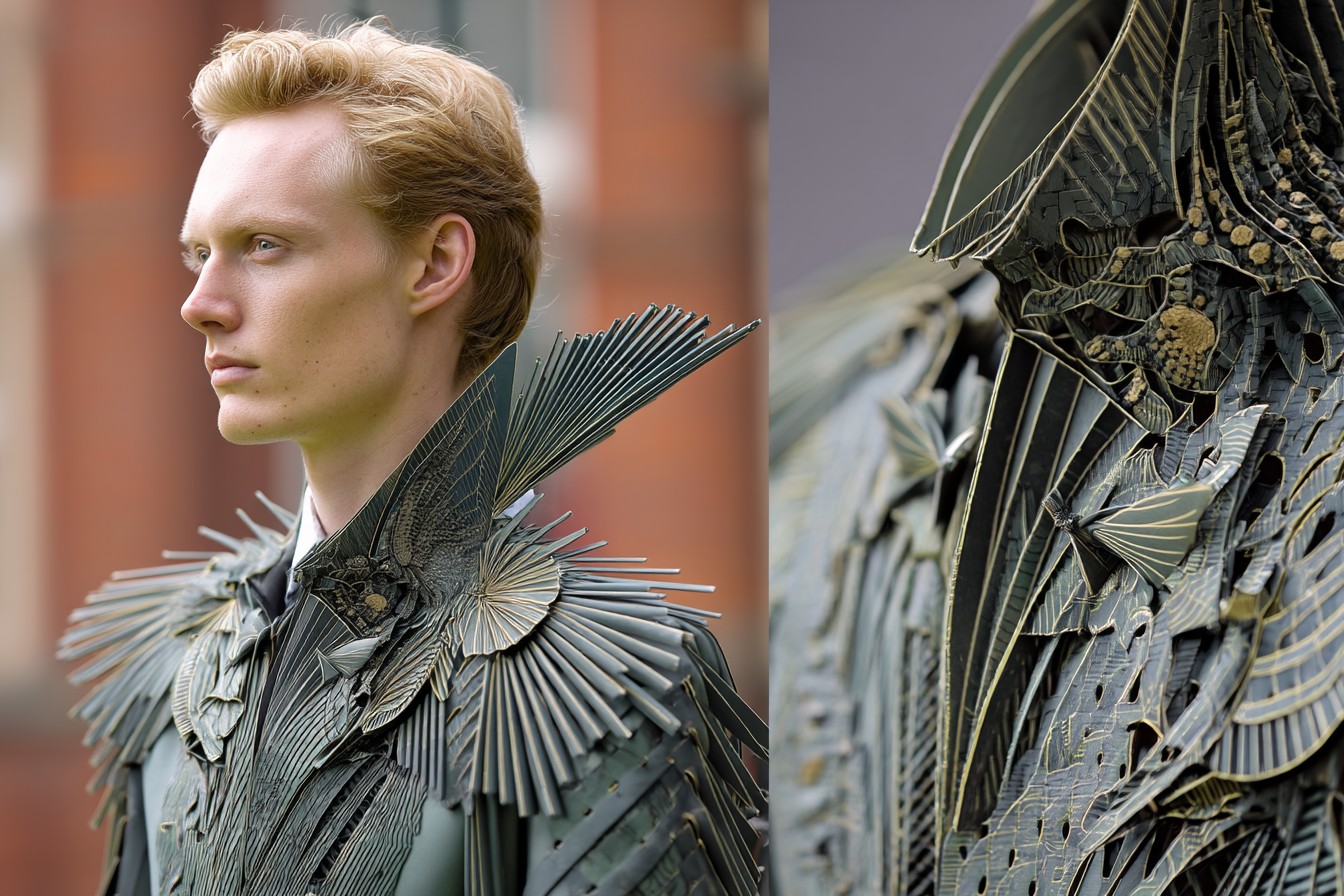
“The goal,” as Tom explains it, “is to look like you got dressed in the dark after sleeping through your alarm, but somehow still look decent. It’s the festival equivalent of bedhead hair—obviously you want it to look good, but it can’t look like you want it to look good.”
This approach extends to maintenance during the festival itself. A certain level of dishevelment is expected by day two. In fact, being too well-turned-out on the final day suggests you’ve brought an excessive amount of clean clothes or, worse, are actually leaving the site to shower and change somewhere civilized. Both are cardinal sins of festival authenticity.
There’s a sweet spot of festival grubbiness—not so pristine that you look like a day-tripper, but not so filthy that you’re a walking health hazard. Think of it as strategic dishevelment: the mud on your boots was earned, not applied pre-festival like my embarrassing 2008 self.
The evolution of British festival fashion has been interesting to observe over the past decade. The late 2000s and early 2010s saw peak “festival as fashion show” energy, with Glastonbury in particular becoming a celebrity style showcase. This trickled down to regular attendees feeling pressure to curate perfect festival looks.
The backlash was inevitable and welcome. There’s been a clear shift back toward authenticity, functionality, and a certain studied casualness. Even celebrities have toned down their festival peacocking, perhaps realizing that looking like you’ve employed a stylist to dress you for standing in a field is inherently ridiculous.
That said, there are still tribal elements to festival dressing that signal your music affiliations. Download Festival looks very different from Wilderness. Creamfields has its own aesthetic distinct from Green Man. But across all of them, the British male approach remains consistent: you should look appropriate for the festival you’re attending while appearing not to have given it too much thought.
Perhaps the best festival style advice I ever received came from a veteran sound engineer I met at End of the Road Festival. After I complimented his perfectly weathered vintage Carhartt jacket, he shrugged and said: “Dress for comfort, pack for catastrophe, and focus on the music. Nobody remembers what you wore, they remember if you were a good laugh or a miserable bastard.”
He’s right, of course. The best-dressed man at any festival isn’t the one in the perfectly curated outfit—it’s the one who’s comfortable, prepared for the elements, and completely present in the experience rather than fretting about how he looks in it.
So as festival season approaches, remember the golden rules of British festival dressing for men: function first, subtle personality second, and visible effort never. Your outfit should be able to handle mud, rain, sunshine, and the inevitable spilled pint without causing you distress. It should include elements of practical weatherproofing without making you look like you’re dressed for an Arctic expedition. And most importantly, it should allow you to focus entirely on enjoying the music and the experience, rather than protecting your precious garments or posing for Instagram.
Oh, and one final tip from a man who learned the hard way: no matter how tempting it might be, never, ever pre-distress your jeans for a festival. The mud will find you on its own terms, I promise.
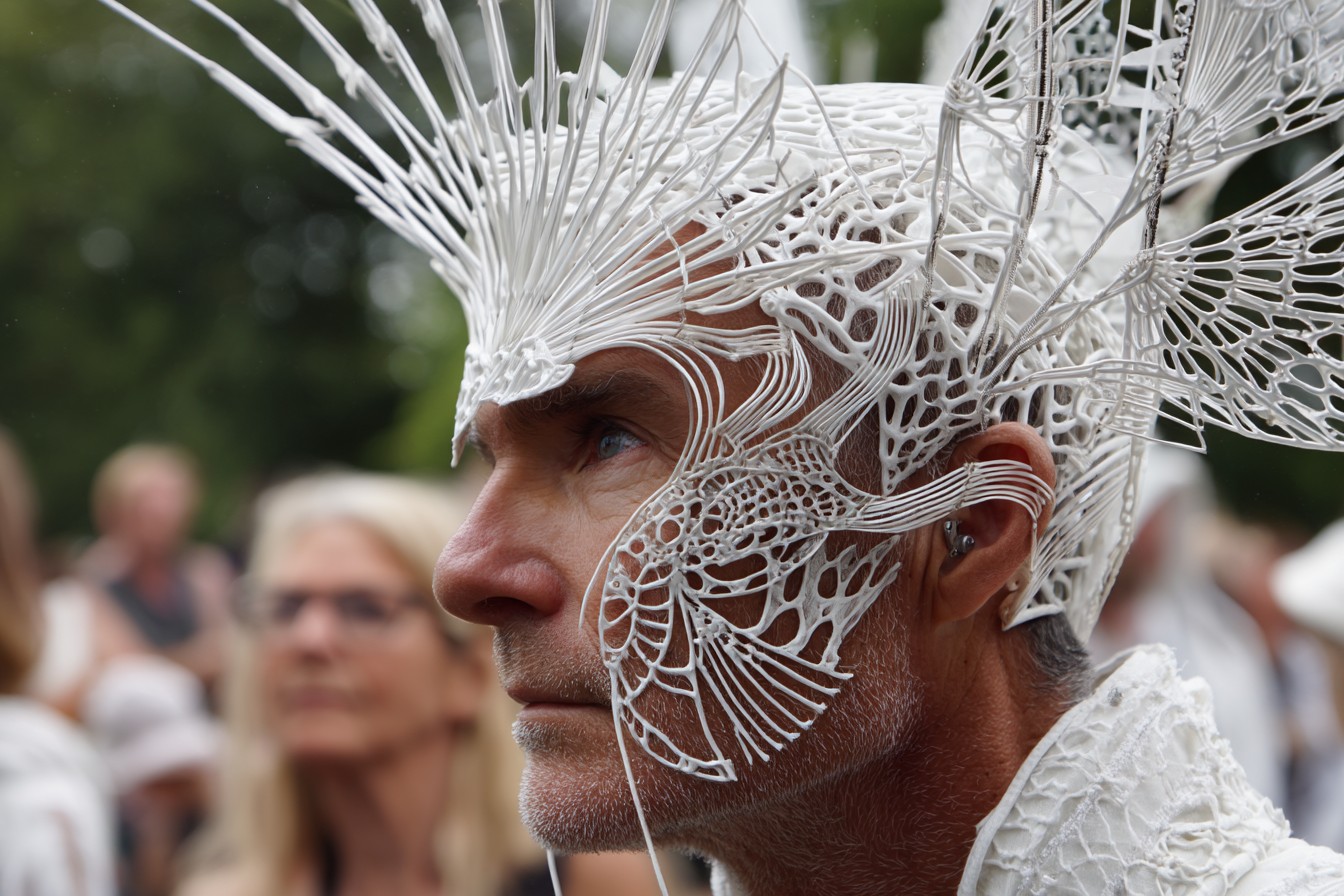
Leave a Reply